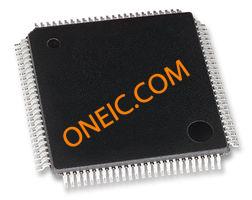STM32F207VGT6
32-bit ARM Cortex-M3 microcontrollers with 1MB Flash, 128KB RAM, LQFP-100 package
Manufacturer: stm
series introduction
# Introduction to the STM32F207VGT6 Product Series
## 1. Overview
The STM32F207VGT6 belongs to the STM32F2 series of microcontrollers developed by STMicroelectronics. This series is built on the high - performance ARM® Cortex® - M3 32 - bit RISC core, operating at a frequency of up to 120 MHz. The STM32F207VGT6 offers a rich set of features and peripherals, making it suitable for a wide range of applications, from industrial control systems to consumer electronics.
## 2. Key Features
### 2.1 Core and Performance
- **ARM Cortex - M3 Core**: The ARM Cortex - M3 core provides a high - performance computing platform with a Harvard architecture and a 3 - stage pipeline. It offers excellent code density and low power consumption, enabling efficient execution of complex algorithms.
- **High - Speed Operation**: With a maximum operating frequency of 120 MHz, the STM32F207VGT6 can handle tasks quickly, such as real - time data processing, motor control, and communication protocol handling.
- **Memory Protection Unit (MPU)**: The MPU allows for the protection of different memory regions, enhancing system security and reliability. It can prevent unauthorized access to critical data and code, which is crucial in applications where data integrity is of utmost importance.
### 2.2 Memory
- **Flash Memory**: The STM32F207VGT6 is equipped with 1 MB of embedded Flash memory. This large - capacity memory can store the application code, data tables, and configuration parameters. The Flash memory has a high - speed access time, which helps in reducing the execution time of the program.
- **SRAM**: It has 128 KB of static random - access memory (SRAM). The SRAM is used for storing variables, intermediate results, and stack space during program execution. The large SRAM size allows for the implementation of complex algorithms and data - intensive applications.
### 2.3 Peripherals
#### 2.3.1 Communication Interfaces
- **USB**: It supports both USB 2.0 full - speed (12 Mbps) and USB On - The - Go (OTG) functionality. This enables the microcontroller to communicate with a wide range of USB devices, such as keyboards, mice, and external storage devices. The USB OTG feature allows the device to act as either a host or a peripheral, providing greater flexibility in system design.
- **Ethernet**: The integrated Ethernet MAC (Media Access Controller) supports the IEEE 802.3 standard. It enables the microcontroller to connect to local area networks (LANs) and communicate using Ethernet protocols, such as TCP/IP. This makes it suitable for applications that require network connectivity, such as industrial monitoring systems and home automation.
- **CAN**: The Controller Area Network (CAN) interface is available, which is widely used in automotive and industrial applications for reliable communication between different nodes. The CAN interface supports both standard and extended frame formats and can operate at high data rates.
- **UART, SPI, and I2C**: Multiple Universal Asynchronous Receiver - Transmitter (UART), Serial Peripheral Interface (SPI), and Inter - Integrated Circuit (I2C) interfaces are provided. These interfaces are commonly used for communication with sensors, actuators, and other external devices.
#### 2.3.2 Timers
- **Advanced - Control Timers**: There are advanced - control timers that can be used for motor control applications. These timers can generate precise pulse - width modulation (PWM) signals with high resolution, which is essential for controlling the speed
Images for reference

100-LQFP

Image Preview

Image Preview